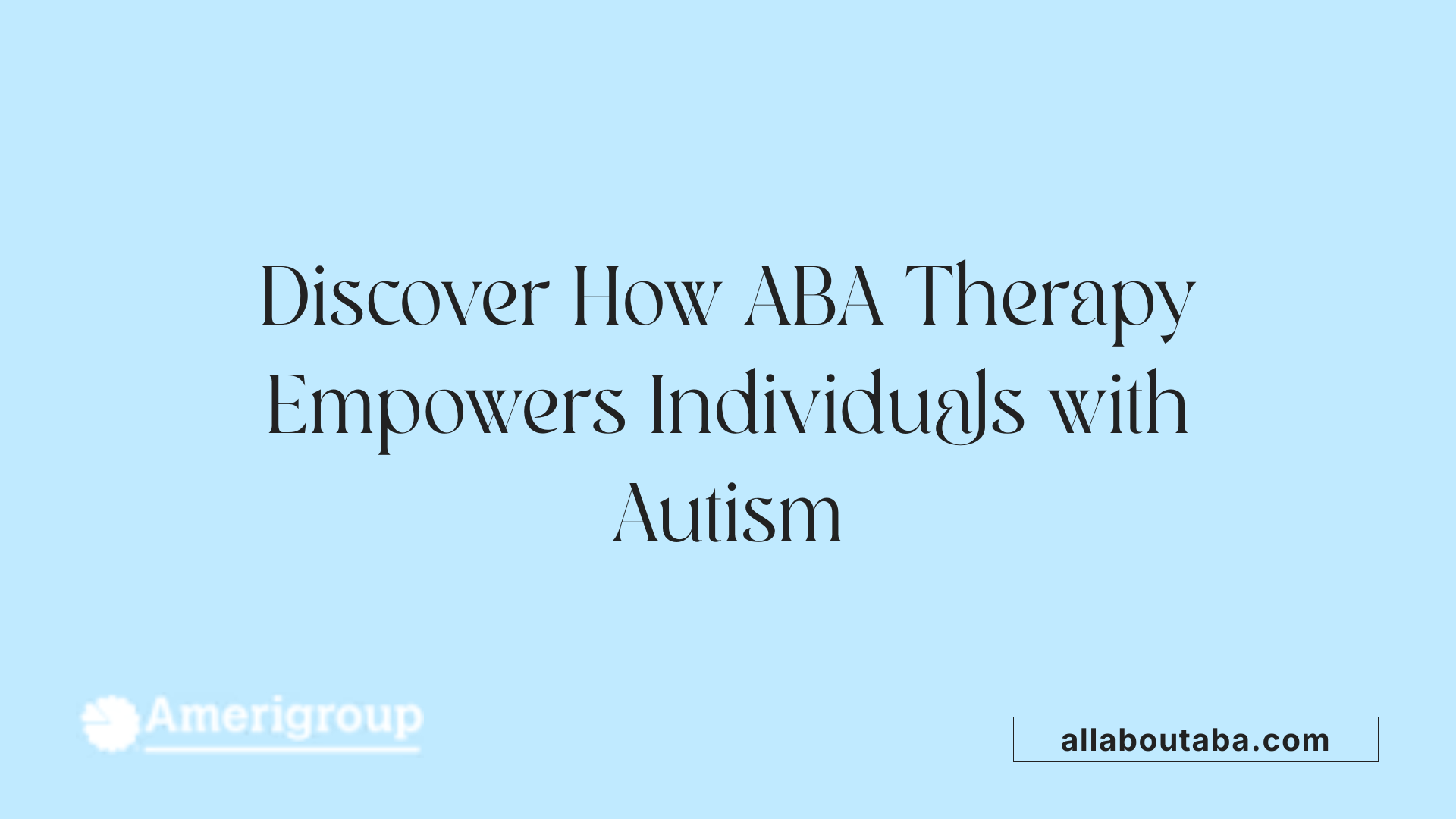Best Practices For Telehealth Autism Therapy
Introduction to Telehealth in Autism Therapy
Telehealth has emerged as a vital avenue for delivering Applied Behavior Analysis (ABA) therapy to individuals with autism, especially when traditional in-person sessions are challenged by environmental or logistical barriers. This article explores best practices recommended by experts and organizations such as the Council of Autism Service Providers (CASP) to ensure effective, safe, and high-quality ABA therapy via telehealth platforms.
Understanding Applied Behavior Analysis (ABA) Therapy for Autism

What is Applied Behavior Analysis (ABA) therapy for autism?
Applied Behavior Analysis (ABA) therapy is a science-based intervention designed to improve skills and reduce problematic behaviors in individuals with autism. It operates by using techniques such as positive reinforcement, prompting, and analyzing behavior through the A-B-C (antecedent, behavior, consequence) model to encourage meaningful change. ABA programs are highly individualized, tailored by trained professionals called Behavior Analysts. These programs can be delivered in various environments including home, school, and community settings. Research from over 20 scientific studies confirms ABA as an effective, evidence-based treatment that boosts communication, social skills, and daily living abilities while decreasing harmful behaviors. Ultimately, ABA aims to help autistic individuals increase their independence and engage more fully in society through targeted, data-driven strategies.
What types of professionals provide ABA therapy?
ABA therapy is provided by a team of skilled practitioners specializing in behavioral analysis and autism treatment. The core providers are board-certified behavior analysts (BCBAs), who assess individuals and develop personalized treatment plans. Registered Behavior Technicians (RBTs) implement the therapy under supervision. These professionals often work for specialized companies that maintain certifications through recognized programs like BACB and QABA, ensuring adherence to best practices and safety standards. Additionally, licensed therapists, developmental pediatricians, psychologists, or psychiatrists may contribute by diagnosing autism or overseeing treatment. Overall, effective ABA therapy depends on qualified professionals with behavioral science expertise to deliver tailored, evidence-based support across all age groups.
What techniques are commonly used in ABA therapy?
ABA therapy employs a variety of techniques to promote skill development and reduce problematic behaviors:
- Positive Reinforcement: Rewarding desired behaviors to increase their occurrence.
- Prompting and Prompt Fading: Guiding individuals toward correct actions and gradually reducing assistance.
- Discrete Trial Training (DTT): Breaking skills into small, manageable steps for systematic teaching.
- Behavior Chaining: Teaching complex tasks by linking a series of smaller behaviors.
- Visual Aids: Using modeling, picture communication systems, and visual prompts to support learning.
- Behavior Reduction Methods: Techniques like extinction and redirection to decrease unwanted behaviors.
- Script Fading: Enhancing social communication by gradually reducing scripted support.
These approaches are customized according to individual needs and aim to foster meaningful, socially significant behavioral improvements.
How is the effectiveness of ABA therapy measured?
Effectiveness is determined through systematic data collection on targeted behaviors over time, tracking skill development and decreases in problematic behaviors. Standardized assessment tools such as the Vineland-3, VB-MAPP, and Early Functional Living (EFL) help evaluate progress in communication, social skills, and adaptive behaviors. Newer tools like the Patient Outcome Planning Calculator (POP-C) estimate individualized treatment dosage based on symptom severity and monitor how changes affect outcomes. Continuous progress monitoring involves analyzing behavioral data, reviewing goals, and adjusting interventions accordingly. Combining these quantitative and qualitative measures helps clinicians, caregivers, and analysts comprehensively assess therapy success and tailor treatment plans for optimal results.
Telehealth Modalities in ABA Therapy and Appropriate Use

Overview of telehealth modalities for ABA therapy
The Council of Autism Service Providers (CASP) identifies four primary telehealth modalities to deliver Applied Behavior Analysis (ABA) therapy remotely. These include the Partial Telehealth Model, Telehealth Direct Services, Caregiver-Implemented Services, and Caregiver Consultations. Each modality offers a flexible approach tailored to different client needs and therapy goals.
Criteria for selecting telehealth modalities
Before selecting a telehealth modality, providers must carefully evaluate its suitability by weighing risks and benefits. Considerations include the nature of the treatment goals, session objectives, and environmental factors that may impact therapy effectiveness. Ensuring the modality aligns with the client's clinical needs and behavioral targets is essential to enhancing outcomes.
Role of caregiver capabilities and technology
A vital factor in choosing and implementing telehealth services is the caregiver's ability to support the process. This includes familiarity with technology and their capacity to engage actively. CASP emphasizes the importance of using appropriate hardware such as laptops or desktop computers to provide stable and secure sessions. Providers also need to offer guidance and resources to empower caregivers, fostering a positive therapeutic environment and smooth session execution.
Ensuring a Positive Telehealth Experience in ABA Therapy Sessions

Key Elements for Successful Telehealth Sessions
Successful telehealth sessions in ABA therapy hinge on creating a positive, engaging experience. Providers should focus on personable interactions, dedicating their full attention to clients during sessions. This involvement helps maintain therapeutic rapport, crucial for client progress.
Technological Considerations and Environment Setup
Appropriate technology is essential for smooth telehealth delivery. CASP recommends using laptops or desktop computers over mobile devices to ensure better connectivity and functionality. The session environment must be free of distractions, quiet, and private to enable focus for both provider and client.
Importance of Personal Interaction and Privacy
Maintaining privacy is not only a legal necessity but also supports client comfort and trust. Providers should use secure platforms and confirm that no unauthorized persons can overhear or see sessions. Personal interaction extends beyond the screen; showing empathy and adapting communication styles helps mimic the connection found in in-person therapy, enhancing effectiveness.
Operational and Clinical Guidelines for Telehealth ABA Delivery

CASP Organizational Guidelines
The Council of Autism Service Providers (CASP) offers comprehensive Organizational Guidelines designed to ensure high-quality Applied Behavior Analysis (ABA) services. These guidelines provide best-practice policies, procedures, and infrastructure recommendations to support ABA providers operating telehealth services. They are useful not only for providers but also for other stakeholders such as clients, families, payers, regulators, and advocates.
Business Operations and Clinical Operations in Telehealth ABA
The guidelines emphasize critical areas within business and clinical operations. Business operations include strategic planning and maintaining documentation standards that support smooth telehealth delivery. Clinical operations focus on achieving clinical excellence through individualized treatment targeting various goals such as challenging behaviors, adaptive living skills, and sleep regulation. Providers are encouraged to assess client needs and caregiver technological abilities carefully to select appropriate telehealth models and ensure effective service delivery.
Risk Management and Ethical Considerations
Risk management is a core focus, addressing client rights, documentation integrity, and ethical practice standards. Providers are guided to create secure and private telehealth environments, ensuring session integrity with personable, focused interaction. Ethical considerations are highlighted to maintain professionalism, confidentiality, and compliance with best practices in remote ABA delivery.
Disaster Response and Continuity of Care
CASP also provides disaster response guidelines tailored for autism service providers. These recommendations aim to sustain service continuity during unforeseen disruptions, such as natural disasters or public health emergencies. The emphasis is on preparedness strategies and seamless transition to telehealth modalities to prevent interruption in client care.
Together, these operational and clinical guidelines craft a robust framework for delivering safe, effective, and consistent telehealth ABA services, reinforcing CASP's commitment to quality and comprehensive support within the evolving landscape of autism care.
Caregiver Involvement and Post-Session Best Practices

How do caregivers participate in telehealth ABA sessions?
Caregivers play a vital role in telehealth ABA services through two main modalities: Caregiver-Implemented Services and Caregiver Consultations. In Caregiver-Implemented Services, caregivers actively deliver interventions under provider guidance, which empowers them to support their child's progress directly. During Caregiver Consultations, providers collaborate with caregivers to offer coaching, training, and strategies tailored to the child's needs and family environment.
What should providers do after telehealth sessions?
Following each session, providers should conduct a thorough review with caregivers. This includes discussing session progress, addressing any questions, and confirming the next appointment to maintain scheduling clarity. Additionally, completing all necessary documentation promptly ensures that treatment plans remain updated and that clinical records are accurate.
Why is continuity of care important and how is it maintained?
Continuity of care is crucial to ensure steady progress toward treatment goals. By integrating caregiver feedback during reviews and scheduling consistent follow-ups, providers foster a seamless therapeutic experience. Documentation of each session—covering clinical notes and treatment adjustments—supports informed decision-making and coordination among care team members.
Together, these practices reinforce a collaborative approach, where caregivers are engaged partners and post-session processes uphold high-quality care delivery in telehealth ABA services.
The Benefits of ABA Therapy via Telehealth for Individuals with Autism
How does ABA therapy benefit individuals with autism?
ABA therapy benefits individuals with autism by systematically teaching and reinforcing skills that improve communication, social interaction, and daily living abilities. It relies on understanding how behavior works and uses positive reinforcement to encourage helpful behaviors while reducing harmful ones. Through personalized treatment plans designed by trained professionals, ABA targets vital areas such as language development, social skills, attention, and problem behaviors.
How does telehealth expand access and maintain quality?
Telehealth broadens the reach of ABA therapy, especially when in-person sessions are challenging due to environmental or logistical factors. The Council of Autism Service Providers (CASP) endorses telehealth as a valuable option to ensure continuity of care. Providers can implement various telehealth models—ranging from caregiver-implemented services to direct therapist-led sessions—based on client needs and caregiver capabilities. This approach maintains quality by emphasizing positive interactions, privacy, use of proper technology (preferably laptops or desktops), and thorough post-session follow-ups with caregivers.
What are the target areas such as communication and adaptive skills?
ABA therapy delivered via telehealth continues to address core developmental targets, including communication, social interactions, adaptive living skills, sleep behaviors, and managing challenging behaviors. Remote delivery allows therapists to work closely with caregivers to implement strategies that promote independence and improve everyday functioning. This flexibility helps individuals with autism develop essential skills across multiple environments, supporting their growth and confidence.
| Aspect | Description | Impact |
|---|---|---|
| Communication Skills | Teaching language and social communication through structured and reinforced techniques | Enhances ability to connect and express needs |
| Adaptive Living Skills | Developing daily living abilities such as dressing, feeding, and self-care | Increases independence and quality of life |
| Behavioral Management | Using positive reinforcement to reduce harmful behaviors | Promotes safety and social acceptance |
| Telehealth Accessibility | Offering diverse remote service models tailored to client and caregiver needs | Expands access and ensures treatment consistency |
Conclusion: Integrating Best Practices for Effective Telehealth ABA Therapy
Implementing ABA therapy through telehealth requires careful planning, adherence to expert guidelines, and an emphasis on individualized care driven by data and professional expertise. Leveraging the modalities outlined by CASP, ensuring positive session environments, supporting caregivers actively, and maintaining operational excellence are crucial steps to maximize the benefits of remote autism therapy. These best practices collectively empower providers, caregivers, and clients to overcome barriers and achieve meaningful outcomes in improving the lives of individuals with autism.
References
- Telehealth ABA Best Practices Explained
- Standards & Guidelines - Council of Autism Service Providers
- Applied Behavior Analysis (ABA)
- Applied Behavior Analysis (ABA)
- 6 Benefits of ABA Therapy for Children with Autism
- ABA Clinics/Behavior Specialist for Toddlers in Los Angeles
- Applied Behavior Analysis (ABA)
- Who can provide ABA therapy?
- A Tool for Determining Treatment Dosage in Applied ...
- Applied Behavior Analysis (ABA)
Other articles
Recent articles

The Role Of Visual Arts In Autism Communication Development

How To Address Tactile Defensiveness In Autism

Best Practices For Telehealth Autism Therapy

How To Help Autistic Children Develop Friendship Skills

How Schools Can Support Autistic Students In Career Prep

Best Strategies For Autism-Friendly Event Planning

Understanding Noncontingent Reinforcement In Autism Behavior Plans

How Drama Therapy Benefits Autistic Individuals

Best Practices For Autism-Friendly Fitness And Recreation Centers

Best Ways To Promote Healthy Social Media Use For Autistic Teens

How To Help Autistic Children Cope With Public Speaking

Autism And Strategies For Managing Unexpected Changes

Best Podcasts About Autism For Parents And Educators

Autism And The Impact Of Seasonal Changes On Behavior

The Role Of Diet In Managing Co-Occurring Conditions With Autism

Sleep Challenges In Autism And Practical Solutions

Best Ways To Build Daily Routines For Autistic Children

Best Practices For Supporting Autistic Entrepreneurs

Autism And Strategies For Navigating Large Social Gatherings

Adaptive Sports And Recreational Activities For People With Autism

Autism And The Benefits Of Story-Based Learning Activities

Understanding The Role Of Play In Autism Development

Autism And The Impact Of Environmental Noise On Learning

How To Create Autism-Friendly Community Spaces

Autism And Chronic Health Conditions: What To Know

The Role Of Care Managers In Autism Life Planning

How To Teach Social Boundaries To Autistic Children

How Autistic Individuals Experience Empathy Differently

How To Support Autistic Employees In Remote Work Settings

Autism And The Relationship Between Motor Skills And Learning

How To Create Community Resource Guides For Autism Families

How To Teach Daily Living Skills To Autistic Teens

Autism And The Impact Of Mind-Body Practices On Stress Reduction

Autism And The Benefits Of Outdoor Group Activities

How To Create Autism-Friendly Sensory Paths In Schools

Best Practices For Autism-Friendly Park And Recreation Areas

Autism And Strategies For Reducing School Refusal

Supporting Autistic Individuals In Public Speaking

The Role Of Diet In Managing Autism Symptoms

The Benefits Of Gardening Clubs For Autism Social Development

How To Prepare Autistic Children For Dental Visits

Autism And Employment: Career Paths That Work

Best Practices For Autism-Friendly Hotels And Lodging

The Impact Of Screen Time On Autism Development

Autism Screening Tools For Early Childhood

The Role Of Physical Exercise In Autism Therapy

Best Strategies For Supporting Autistic College Students

The Role Of Technology In Autism Early Detection

Sensory-Friendly Classroom Design Ideas For Autistic Students

The Role Of Speech Therapy In Building Social Communication Skills

Best Strategies For Handling Autistic Burnout In Adults

Autism And The Importance Of Predictability In Routine

Autism And Peer Education: Teaching Acceptance In Schools

Best Practices For Sensory-Friendly Libraries And Reading Rooms

Self-Advocacy Skills For Autistic Adults

The Role Of Technology In Autism Peer Communication

Promoting Physical Activity In Children With Autism

How To Prepare Autistic Children For Medical Procedures

The Role Of Social Media In Autism Advocacy And Awareness

The Impact Of Sensory Rooms In Public Facilities For Autism

How To Create An Autism-Friendly Holiday Celebration

Best Practices For Inclusive Education For Autistic Students

Autism And Mental Health: Recognizing Signs Of Distress

Best Practices For Sensory-Friendly Waiting Rooms

The Role Of Teachers In Early Autism Red Flag Identification

Autism-Friendly Housing Design Features

Autism-Friendly Housing Design Features

How Environmental Modifications Improve Autism Outcomes

Autism And Technology-Based Learning Tools

Supporting Autistic Children Through Changes In Routine

The Link Between Autism And Working Memory Challenges

Best Practices For Autism-Friendly Cooking Classes

Autism And The Benefits Of Structured Music Lessons

Best Books To Teach Kids About Autism Acceptance

Sensory Diets And Their Benefits For Autism Management

How To Prepare Autistic Teens For Driver’s Education

How To Teach Autistic Teens About Healthy Relationships

The Role Of Visual Prompts In Building Daily Habits For Autism

Addressing Sleep Regression In Children With Autism

Understanding Social Stories And How They Help Autistic Children

Navigating Insurance Coverage For Autism Therapy Services

How To Prepare Autistic Adults For Independent Travel

Supporting Autistic Individuals In Volunteer Work

How Mindfulness Practices Can Support Autism Well-Being

Understanding Hyperfocus And Special Interests In Autism

Understanding Stimming As A Self-Regulation Tool

Sensory-Based Interventions For Autism At Home

Best Ways To Introduce Self-Advocacy In Autistic Teens

Best Ways To Support Autistic Employees In Customer Service Roles

Best Practices For Autism-Friendly Volunteer Programs

Autism And The Benefits Of Sensory Play For Emotional Growth

Autism And Strategies For Building Peer Relationships

Understanding How Autism Affects Memory Processing

Autism And Strategies For Building Coping Skills In Teens

The Role Of Parent Training In Autism Intervention Programs

Autism-Friendly Workplace Accommodations

Using Visual Timers For Autism Time Management

What Is ABA Therapy?

Autism and Sleep

Do Plastic Toys Cause Autism?
We’re All About You, Your Family, and Your Child

